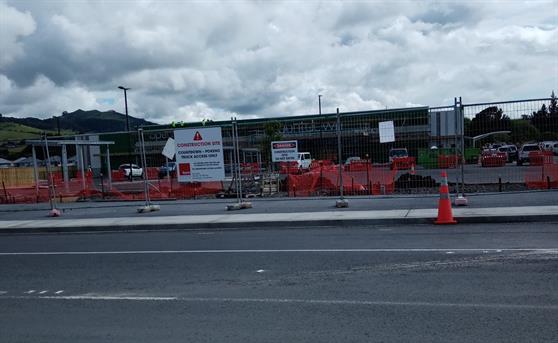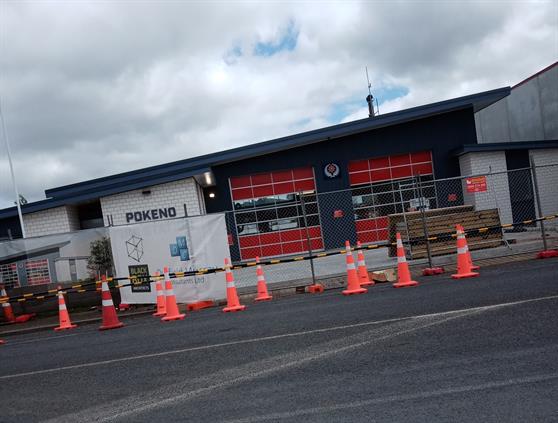Here’s the latest information about building consents and resource consents from Waikato District Council.
If you wish to receive this via email, you can subscribe here.
December and January Updates
No Duty Building inspector service from 7 December
We’ve seen a big increase in the number of building consent applications coming in. We’ve got more consent applications than we had at this time last year. As a result, we are unable to offer our Duty Building Inspector service from Monday
7 January, due to workloads. We hope to be able to offer this service again in January. We apologise for the inconvenience. In the meantime, if you are looking for advice or information, you’ll find a list of agencies here.
Offices and libraries close on 24 December
Our offices and libraries will close on Thursday 24 December at 3pm. They will re-open on Monday 11 January 2021 at 8am.
Duty Planner service
Our Duty Planner Service will not be available over that time (from 24 December). The service will start again from 11 January 2021.
Building clocks
The Building ‘clock’ will stop on Sunday 20 December 2020 – the last day will be Friday 18 December. The clock will start again on Sunday 10 of January 2021 – the first working day will be Monday 11 January.
Water meter readings
Final water meter readings need to be done by 21 December. Anything after this date will need to be done from 12 January 2021.
LIM reports
LIMs ‘clocks’ stop on Thursday 24 December. They will start again on Sunday 10 January 2021.

Staff profile
Meet Roxanne Dow, Graduate Planner
Roxanne Dow joined Waikato District Council in February 2020 as a Graduate Planner. She is part of the east
team covering the Tamahere, Eureka, Hukunui-Waerenga and Whangamarino wards.
Roxanne enjoys the challenge and learning experiences that
the role brings. She particularly enjoys working with customers in the Duty planner space and working within a team environment, learning from the other experienced members of the team.
Roxanne gained a Bachelor of Environmental Planning at the University of Waikato. Outside of work Roxanne enjoys spending time with friends and family and keeping active outdoors.
What's happening
Significant Development in Pokeno
Pokeno Countdown Supermarket:
The main 3000m2 building structure is now complete with façade colours and signage added. The car park area is currently being formed along with the pedestrian footpath and gardens fronting Great South Road. Wellington Street, accessing the site,
has now been formed, kerbed and sealed.

Pokeno Fire Station:
The 485m2 building is now complete with façade colours and signage added. The concrete driveway to Great South Road is now formed, along with rear parking spaces accessed from Selby Street.

Helpful tips and reminders
Integrated Resource Management and Resource Consent Processing
It is important to include Waikato Regional Council in any discussions around consenting requirements under the Waikato Regional Plan.
This is particularly important for earthworks and filling activities, which may require consent from both Regional and District Councils. It’s also really important when the proposal is reliant on a particular servicing solution, such as stormwater
treatment and disposal from larger subdivisions and comprehensive developments.
Each application will be assessed on its merits. However, both District and Regional Councils have the discretion to defer the notification and/or hearing of an application, if they consider that, on reasonable grounds, further consents are required.
This ensures that proposals are assessed in an integrated manner, taking into account any overlapping and cumulative effects that may result from the proposal.
Gaining district consents ahead of and separate to Regional consents (or vice versa), runs the risk that what is consented by one consent authority is not considered acceptable to the other.
As you may be aware Waikato District Council has now contracted out the asset management of its 3 Waters to Watercare. From the District Council’s perspective, with any larger proposal that involves 3 Waters and the vesting of those assets,
it is also wise to engage early with Watercare, in addition to Council’s own Land Development Engineers in the Consents Team.
A three-way conversation is often required between WRC, WDC Consents Team and Watercare. Not doing so can cause additional financial costs and delays well into the project timelines, where consent holders may have to re-design their proposal and seek
variations to their original consents to ensure their proposal is acceptable to both District and Regional Councils.
National Environmental Standard for Freshwater
You may be aware of the new National Environmental Standard for Freshwater 2020 (NESFW) that has recently come into legal effect. The NESFW has regulations (rules) regarding a number
of matters including the drainage of wetlands. This is particularly relevant to quarrying and filling activities as well as subdivisions and other forms of land development. Any earthworks that result in the drainage of a wetland is now a Prohibited
Activity. This means that no application can be made to a Council and neither can any consent be granted for a project which involves earthworks which drain a wetland. The Waikato Regional Council is the
consenting authority responsible for implementing the NES Freshwater. If you have any questions regarding this matter for your project you should contact them.
Archaeological Sites
The Waikato District has a rich archaeological history, particularly along the banks of the Waikato River. However, not all known archaeological sites are listed in either the Operative or Proposed District Plans. All recorded archaeological sites
are kept by the New Zealand Archaeological Association (NZAA) on their site record scheme.
This information is available directly from NZAA for any individual or organisation to access (limited access is free, while numerous requests or licences are provided at a cost).
Many consultancies often hold these licences and regularly investigate the site record scheme themselves as a part of their own due diligence.
You can request a site record or contact their file keepers at http://www.archsite.org.nz/
As not all archaeological sites are recorded or listed and many are unknown, investigating the archaeological values of a site should be an important part of any project planning.
This is something that should be done in parallel to the pre application process for any resource consent application.
The Heritage New Zealand Pouhere Taonga Act 2014 makes it unlawful for any person to modify or destroy, or cause to be modified or destroyed, the whole or any part of an archaeological site without the prior authority of Heritage New Zealand. If
you wish to do any work that may affect an archaeological site, you must obtain an authority from Heritage New Zealand before you begin.
To find out if you require an authority and to obtain a list of recognised archaeologists, you should discuss your project with their Regional Archaeologist or Heritage Advisor.
Further information can be found here:
https://www.heritage.org.nz/protecting-heritage/archaeologyThe Duty Planner enquiry service
If you have a new planning enquiry, please email it to info@waidc.govt.nz rather than emailing it to the duty planner email or directly to a council planner. This way your enquiry
will be captured in our request management system, which will result in a quicker response time.
Lapse date for s.223/224
We have noticed a recent trend of lapsed s.223/224 so we want to remind you of the timeframes for subdivision consents and when they lapse.
- A subdivision consent starts the day that the report is signed by Council. This date will be shown prominently within the first few pages, underneath the Council team leader’s signature.
- The applicant has 5 years from this date to give effect to the consent. Giving effect to the consent is providing the LT/Survey Plan to Council for signing before the 5-year period lapses.
- If you require an extension of time to get the LT/Survey Plan signed, you may apply to Council for a s125, but this must be approved by Council before the lapse date.
- Please note, changing consent conditions via a s127 does not re-start the 5-year lapse period. The original date still remains the lapse date.
Once the 223 certificate has been signed, the applicant has 3 further years to get the 224 certificate signed. There is no ability for the Council to extend a 224 lapse date.
We’d love to get your feedback
We’re interested in what you think about this newsletter so we can improve it over time. Click here to provide feedback.